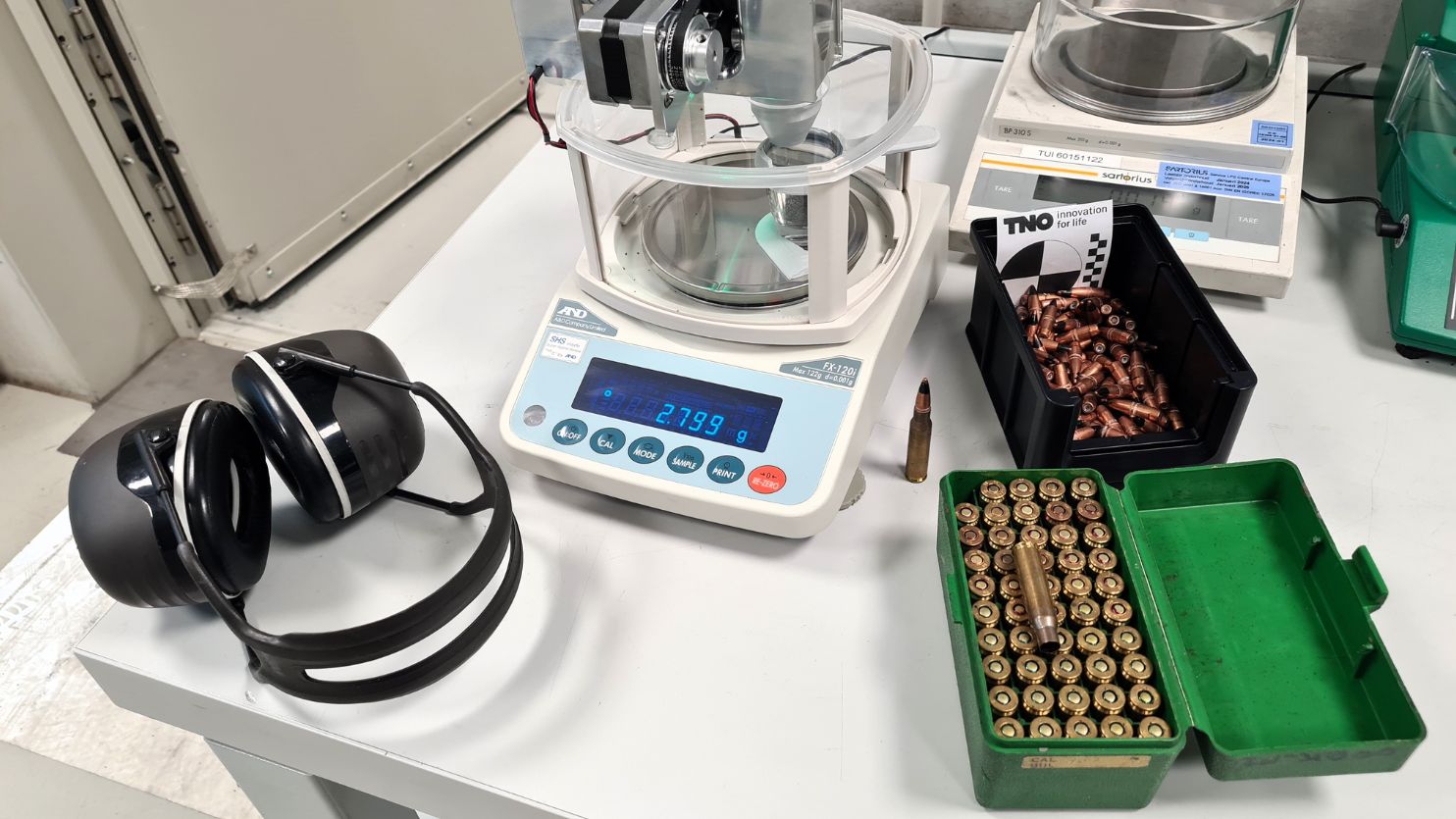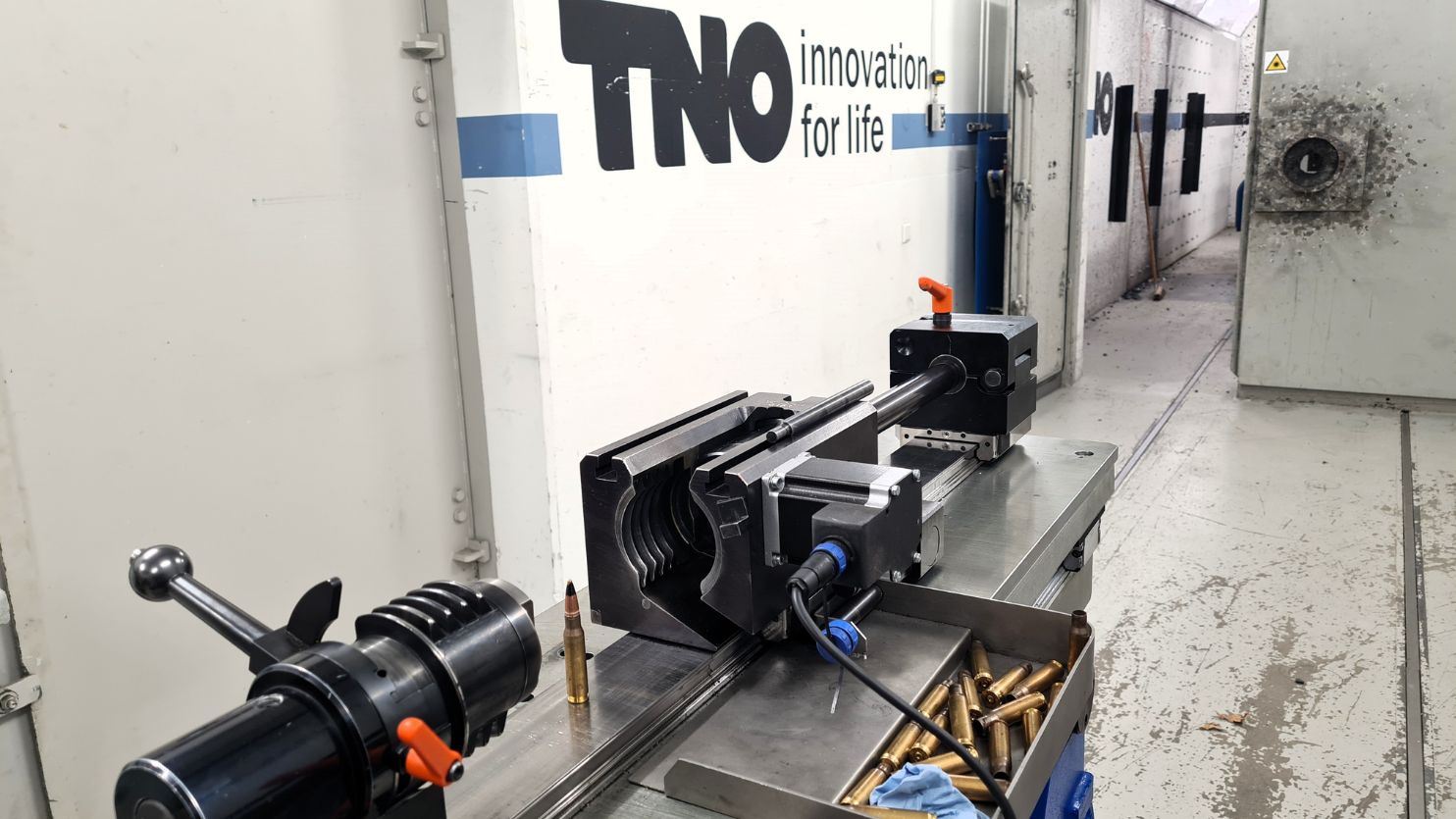
Responsible for safety: the crucial role of the range operator in bulletproof protection
How can we be sure that a helmet offers sufficient protection against projectiles? That a military vehicle has no weak points? Or that a bulletproof vest remains safe after exposure to extreme heat? In TNO’s ballistic research lab, highly skilled range operators conduct defence research to prepare for the battlefield of the future.
In the Ballistic Research Laboratory (LBR), researchers fire ammunition, such as projectiles, at various types of materials - referred to as "samples." This research determines the ballistic effect on the samples: what happens to the sample when it is shot. Samples can include bulletproof vests, helmets, revolving door glass for shops or banks, or vehicle materials. How well is the material protected against ammunition? And does temperature and humidity affect its performance? These factors can all be tested in the lab.
Shooting tunnels
Shooting takes place in a controlled and extremely safe environment. The facility has three shooting tunnels for small-calibre weapons (handguns and shoulder weapons), where materials for personal protection, such as bulletproof vests and helmets, are tested. Materials intended for vehicles are also evaluated here. Additionally, there is one tunnel for testing materials against medium- and large-calibre weapons. Lastly, a large hall accommodates testing of very large and heavy samples, including entire vehicles.
The range operator: guardian of safety and precision
Tests are always conducted by two or sometimes three people. The range operator is ultimately responsible for all handling of ammunition and weapons and ensures overall safety—for both people and equipment. This responsibility extends from preparation to the moment the shot is fired.
More than one expert
The ballistic lab employs 13 range operators, three of whom are in training. During experiments, one range operator always has final responsibility, says range operator Bas. 'We decide among ourselves who will take on this role, and they wear a red armband to indicate they are the lead for that test.'
'The range operator does not fire the shot.'
How do the experiments work in practice?
The range operator selects the appropriate projectiles to test the sample. The lab offers a wide range of projectiles, from 3 millimetres to 150 millimetres in diameter. The range operator may also prepare a clay "body" for testing bulletproof vests or other personal ballistic protective equipment. The depth of impact in the clay must be minimal to ensure the material provides adequate safety when worn.
Once the samples are ready, the range operator conducts test shots to verify the projectile hits the target at the correct speed and orientation. This involves preparing the projectile by selecting the right type and quantity of gunpowder according to the specified testing standard. All of this is meticulously documented, as the lab operates under ISO17025 standards.
A second person checks that everything complies with the correct standards: are the right samples prepared? Have they been conditioned properly? Is the shot pattern correct? Once these checks are complete, the weapon is loaded, and the tunnel is sealed. Only then is the shot fired. 'The person who is not the range operator at that moment fires the shot,' says lab coordinator Helma.

Multi-Level Testing
Testing goes beyond determining whether a material can stop a projectile. Using advanced measurement techniques such as high-speed cameras or X-rays, the range operator can analyse what happens before, during, and after the projectile hits the material. The lab also verifies whether materials meet specific (new) safety standards for clients and collaborates with scientists on research projects.
Testing at Extreme Temperatures
Sometimes materials need to be tested after being conditioned under extreme temperatures. Bulletproof vests, for instance, may be stored for long periods in cold or hot conditions or used in humid climates. These conditions must not compromise the material's quality. The lab can test materials after conditioning them at temperatures ranging from -20°C to +70°C.
Large Vehicles
'Sometimes clients, such as Defence or industry, want to test (large) vehicles,' says Helma. 'We typically start by testing the materials that will be used to build the vehicle, as this is more cost-effective. Eventually, we test the entire vehicle. We place it on a rotating platform to shoot it from all angles, even the top. After the tests, the client receives a report with all experimental data and results.'
'We typically start by testing the materials that will be used to build the vehicle, as this is more cost-effective. Eventually, we test the entire vehicle.'

Other types of tests
Bas adds: 'We also perform stab-resistance tests using knives, needles, or spikes. These are dropped in a controlled manner from a drop tower, and we examine the material's response. This usually involves vests. We can also conduct explosion tests, both indoors and outdoors.'
Ballistic research at TNO: versatile and flexible
'I think we are world leaders in measurement techniques,' says Helma. 'For instance, we can accurately measure a projectile's speed, how straight it travels, and what happens to it. We have special equipment for this because you can’t see it with the naked eye.'
All tests are conducted according to standard procedures, but custom solutions are also provided. The lab's latest project involves a 150-millimetre cannon. Clients, including Defence, praise the lab’s flexibility and willingness to collaborate. They value the lab's ability to handle ad hoc requests and additional questions. While the schedule is usually packed six months in advance, the lab manages to accommodate urgent assignments.
Testing remains essential to protect what the Netherlands holds dear, relying on the expertise and knowledge of TNO-LBR's range operator.
Want to become a time setter too? Come work at TNO
Get inspired
Low frequency active sonar


Environmental effects of sonar

Ocean resilience and transparency

Military use of space

Signature management

